The Rosetta Mission
Part of a series on Space. [View Related Entries]
This submission is currently being researched & evaluated!
You can help confirm this entry by contributing facts, media, and other evidence of notability and mutation.
Overview
The Rosetta Mission is an ongoing study of comet 67P/Churyumov–Gerasimenko through a robotic orbiter with the same name and a lander module named Philae, which were both built and launched by the European Space Agency (ESA) in 2004. Upon the probe's entrance into the orbit of the comet in early August 2014, the mission began to draw international attention and its interest peaked as Philae successfully landed on the surface of the comet in November 2014.
Background
The planning phase of developing a robotic space probe to study the outer surface and internal composition of a comet began as a collaborative project between the NASA and European Space Agency (ESA) during the mid-to-late 1980s. However, in 1992, the NASA cancelled the development due to budgetary limits, while the ESA continued on to develop a comet probe on its own. By 1993, the final flight plan for the mission had been finalized by the agency and the construction of the probe commenced shortly thereafter. The itinerary of Rosetta was designed to rendezvous with the comet, perform flybys of two additional asteroids and ultimately land on the surface of 67P/Churyumov–Gerasimenko for further studies. After a series of postponements due to technical difficulties, the Rosetta mission officially commenced on March 2nd, 2004 with the successful launch of the probe on an Ariane 5 rocket.
Notable Developments
Rosetta performed a fly-by of Mars in 2007, followed by its planned fly-bys of two asteroids 2867 Šteins in September 2008 and 21 Lutetia in July 2010. Following a 31-month period of hibernation, Rosetta was triggered awake from its sleep and resumed its mission towards the rendezvous point with the comet on January 20th, 2014. According to Google Trends, the news of the probe's re-activation prompted the first spike in search queries of the term "Rosetta."
Social Media Presence
Since the launch of the Rosetta probe, the European Space Agency[1] has maintained active presence in the social media to continuously inform and educate the public on its latest progress and milestones. The official blog[5] and a Facebook page[7] for the mission were created on March 2nd, 2004, the same day as the launch of the probe, while the personified Twitter accounts of the Philae module lander[8] and the Rosetta orbiter[9] were created on October 2010 and February 2011, respectively. As of November 2014, the official Facebook page has garnered nearly 87,000 likes and the Twitter accounts for Rosetta and Philae have over 373,000 and 270,000 followers.
Orbit Entrance
On August 6th, 2014, Rosetta began closing the distance with the comet at the speed of 3.3 ft/s (1 m/s) and by September 10th, it became the first man-made object to enter orbit around a comet. According to Google Trends, the news of the probe's rendezvous with the comet marked the second spike in search queries for Rosetta. In the following months, the probe began transmitting scientific data and high-definition images gathered from its ALICE instrument to the ESA.
Philae Landing
At 4:08 p.m. (GMT) on November 12th, Rosetta's module lander successfully made its controlled landing on the surface of 67P. Meanwhile back on Earth, the activities at the mission control centers were livestreamed via ESA's website (shown below) and the hashtags #Rosetta and #CometLanding rose to worldwide trending topics on Twitter.
However, further analysis of the data subsequently revealed that the lander had strayed away from its designated touchdown location by as much as a kilometer as the harpoons and thrusters failed to deploy properly. Video taken from the orbiting Rosetta craft showed the lander, which weighs only about an ounce in the comet's low gravity, "bounce" from its initial landing spot:

Due to Philae's skewed position on the comet's surface, its solar panels, which were designed to power the probe after the drainage of its internal battery power, became partially blocked from exposure to sunlight. On November 14th, ESA officials announced that the Philae lander has run out of its battery power and entered the idle mode as it is unable to harness sufficient sunlight to power itself in its current location.

#Shirtstorm
During Nature Newsteam's livestream coverage of the spacecraft landing on November 12th, Rosetta scientist Matt Taylor was interviewed in a colorful bowling shirt featuring patterns of scantily clothed female cartoon characters. That day, Brooklyn-based journalist Rose Eveleth tweeted a photograph of Taylor with a sarcastic remark citing his shirt as an example of the male-biased work culture within the scientific community (shown below). In the following 48 hours, the tweet gained over 1,000 retweets and 760 favorites, while the hashtags #shirtstorm and #shirtgate were mentioned more than 23,000 times and 19,000 times, respectively.

On November 13th, The Verge[14] published an article titled "I don't care if you landed a spacecraft on a comet, your shirt is sexist and ostracizing," which accussed Taylor of "the sort of casual misogyny that stops women from entering certain scientific fields." Later that same day, Taylor's friend Elly Prizeman tweeted she made the shirt for Taylor's birthday, accompanied by the hashtags "#shirtgate" and "#shirtstorm." On November 14th, Taylor made a tearful apology for wearing the shirt during an ESA Google+ Hangout session (shown below).
Search Interest
External References
[1] European Space Agency – Rosetta
[2] Wikipedia – Timeline of Rosetta Spacecraft
[3] Wikipedia – Rosetta (spacecraft) / Social Media Coverage
[5] European Space Agency – Rosetta Blog
[6] Livestream – Rosetta #CometLanding webcast
[7] Facebook – Rosetta Mission
[8] Twitter – @ESA_Rosetta
[9] Twitter – @Philae2014
[10] Google Trends – Search Interest in 'Rosetta (spacecraft'
[11] Twitter – Tweet Results for #CometLanding
[12] Twitter – Tweet Results for #Rosetta
[13] Twitter – Rose Eveleth's Tweet
[14] The Verge – I don't care if you landed a spacecraft on a comet, your shirt is sexist and ostracizing
[15] Twitter – Elly Prizeman's Tweet
[16] Topsy – Tweets per day: #CometLanding, #Rosetta, and #Philae
[17] Twitter – Tweet Results for #shirtstorm
[18] Twitter – Tweet Results for #wecanlandonacometbutwecant
[19] Telegraph – Rosetta comet landing: Twitter mocks all the simple things we can’t do
[20] Twitter – Elly Prizeman











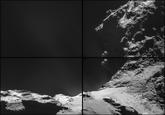
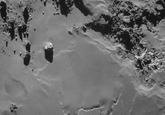
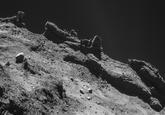
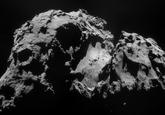

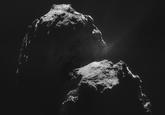
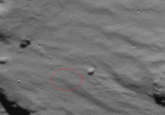


Top Comments
Zancrow
Nov 15, 2014 at 06:14PM EST
jarbox
Nov 15, 2014 at 06:03PM EST